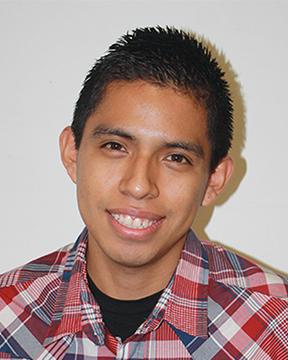A total of seven potential donors had successfully signed up and gone through the process of bone marrow donor registration, nearly four hours after recruitment began, at Falcon Square from 9 a.m. to 2 p.m.
Carol Tsang, a recruitment coordinator for A3M, who works closely with Be the Match, was out on campus Wednesday, Nov. 12, in hopes of finding more potential donors to add to the list.
“I joined while in UCLA in my sophomore year. I wanted to work in a non-profit and this was a great opportunity to work with the community,” Tsang said.
“It’s a though thing to sell; it’s tough, I’m not kidding.”
According to The Institute of Justice, each year, more than 130,000 Americans are diagnosed with a serious blood disease and at least 1,000 people die each year because they cannot find a matching donor.
The process takes a little over three minutes total. It consists of filling out paperwork with personal information, ranging from medical history to contact information.
The process also consists of rubbing a total of four cotton swabs inside the cheek for five seconds. Once the two procedures are done, so is the registration.
Undeclared major Drake Leos took part of the event and urges others to do so, as well.
“Carol asked if I wanted to save a life and it’s by far the best hook you can ever have,” he said.
“It took a little under five minutes. Literally, that’s all it took. Everyone should have enough time to do this and should do it.”
Once listed under the registry, a small blood sample or swab of cheek cells is taken to find your tissue type. That information is then added to the Be The Match Registry.
If a registrant is a match, he or she can go through either two different marrow donating processes.
The first, a small amount of marrow is collected from the donors hip bone using a needle and syringe. Anesthesia is used during this specific procedure.
The second procedure, the donor receives filgratism injections for five days to increase his blood-forming cell count. Blood is drawn from the arm, passes through a machine that separates the cells needed and the rest of the blood is returned through the other arm.
Those who successfully register will remain under the registry until their 61st birthday, where they will then no longer be listed as potential donors.
“I always wanted to be a blood donor, but I couldn’t. So I wanted to be a donor for something like this,” business administration major Silvia Hernandez said.
“It feels good because you know you can save a life whether you’re still old or young.”
Liberal arts major Peter Roldan said that going through the registration has made him feel like he is making a difference in the world.
“It feels pretty good making a difference. You can potentially give someone that extra chance to continue on with (his) life.”









